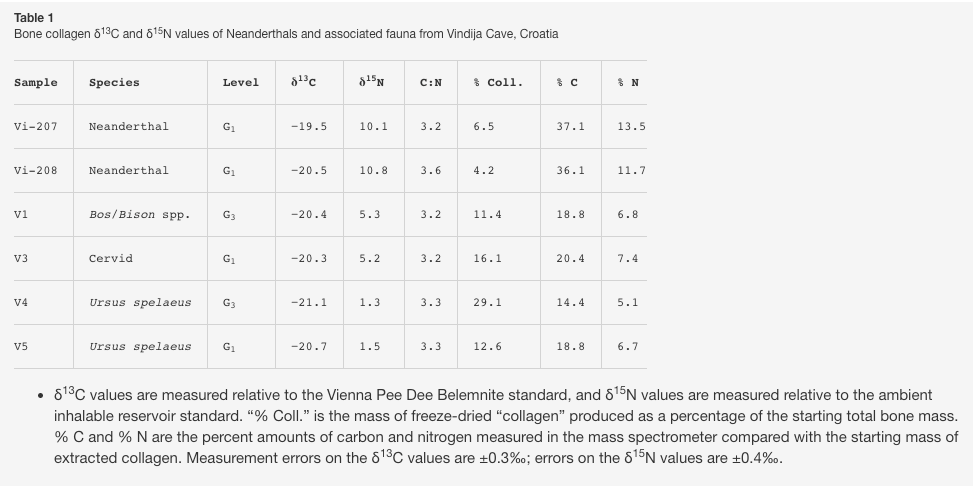Ancient History
28500
BCE
The isotope evidence overwhelmingly points to the Neanderthals behaving as top-level carnivores, obtaining almost all of their dietary protein from animal sources
Neanderthal diet at Vindija and Neanderthal predation: The evidence from stable isotopes
Stable Isotopes Mammal Bone Collagen 13C 15N | Using stable isotopes to estimate date and diet. | |
Neanderthal | Diet, Evolution, Extinction, Hunting | |
Facultative Carnivore | Facultative Carnivore describes the concept of animals that are technically omnivores but who thrive off of all meat diets. Humans may just be facultative carnivores - who need no plant products for long-term nutrition. | |
Carnivore Diet | The carnivore diet involves eating only animal products such as meat, fish, dairy, eggs, marrow, meat broths, organs. There are little to no plants in the diet. | |
Ketogenic Diet | The ketogenic diet involves eating high fat, low carbs, and moderate protein. To be in ketosis, one must eat less than 20 grams of carbohydrates per day. |
Archeological analysis of faunal remains and of lithic and bone tools has suggested that hunting of medium to large mammals was a major element of Neanderthal subsistence. Plant foods are almost invisible in the archeological record, and it is impossible to estimate accurately their dietary importance. However, stable isotope (13C and 15N) analysis of mammal bone collagen provides a direct measure of diet and has been applied to two Neanderthals and various faunal species from Vindija Cave, Croatia. The isotope evidence overwhelmingly points to the Neanderthals behaving as top-level carnivores, obtaining almost all of their dietary protein from animal sources. Earlier Neanderthals in France and Belgium have yielded similar results, and a pattern of European Neander- thal adaptation as carnivores is emerging. These data reinforce current taphonomic assessments of associated faunal elements and make it unlikely that the Neanderthals were acquiring animal protein principally through scavenging. Instead, these findings portray them as effective predators.
Stable Isotope Analyses.
Mammal bone collagen δ13C and δ15N values reflect the δ13C and δ15N values of dietary protein (14). They furnish a long-term record of diet, giving the average δ13C and δ15N values of all of the protein consumed over the last years of the measured individual's life. δ13C values can be used to discriminate between terrestrial and marine dietary protein in humans and other mammals (15, 16). In addition, because of the canopy effect, species that live in forest environments can have δ13C values that are more negative than species that live in open environments (17). δ15N values are, on average, 2–4‰ higher than the average δ15N value of the protein consumed (18). Therefore, δ15N values can be used to determine the trophic level of the protein consumed. By measuring the δ13C and δ15N values of various fauna in a paleo-ecosystem, it is possible to reconstruct the trophic level relationships within that ecosystem. Therefore, by comparing the δ13C and δ15N values of omnivores such as hominids with the values of herbivores and carnivores from the same ecosystem, it is possible to determine whether those omnivores were obtaining dietary protein from plant or animal sources.
Vindija, 42000, Varaždin, Croatia




